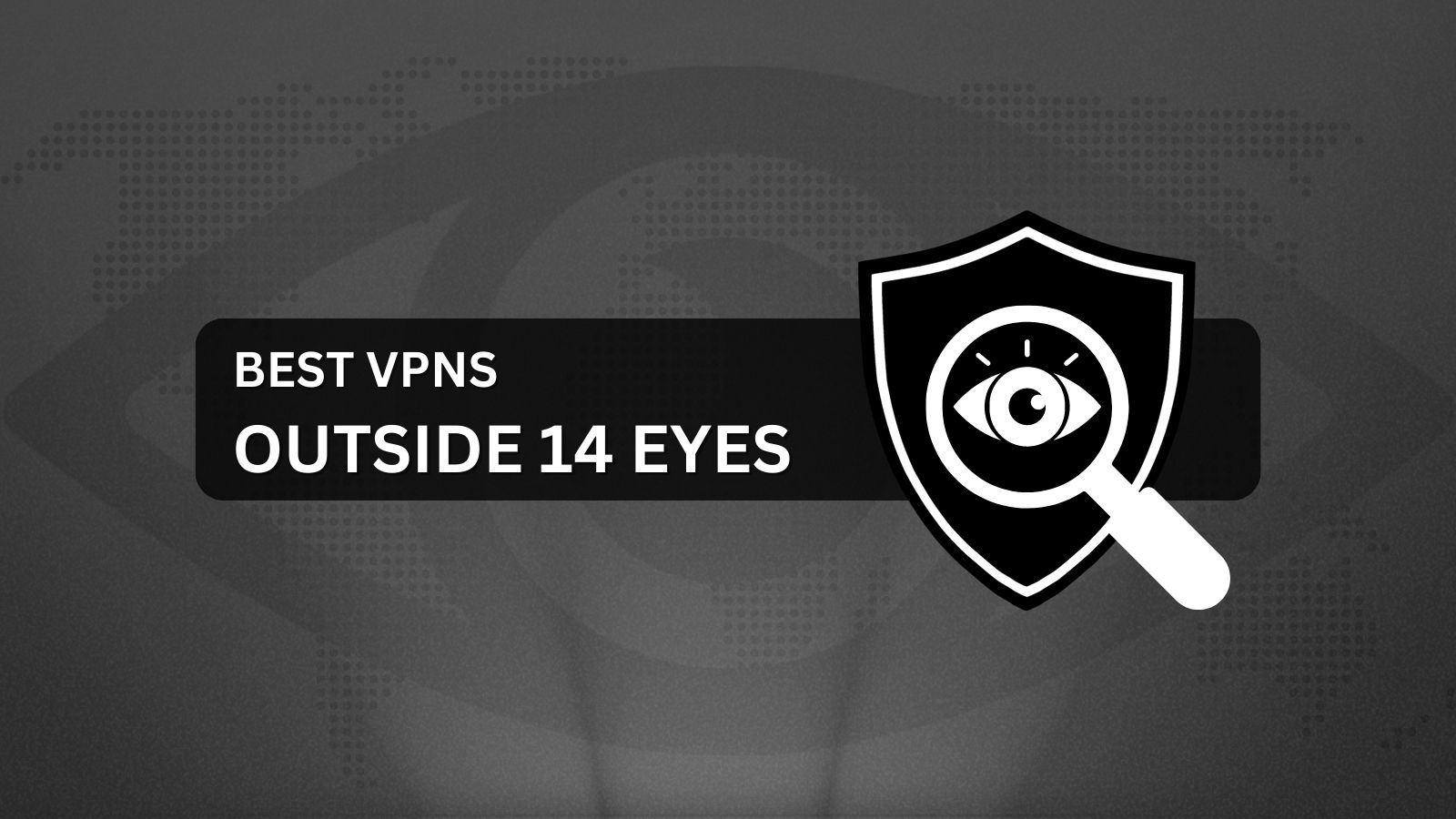
The Best Gaming Laptops Under $1,500 For High-End Gaming, VR, and Content Creation
So far, we have seen gaming laptops under $500, under $1,000, and also under $2,000. While these are excellent choices, the sweet spot lies near the $1,500 mark. At this price, you get the best combination of price, portability, and feature-set for a gaming laptop and enough room for customization to either go up or down the price.
In this price segment, you will find most gaming laptops offer the Intel Core i7-8750H hexa-core CPU and a selection of GPUs ranging from the NVIDIA GTX 1050 Ti to the GTX 1070. AMD laptops are far and few in between and we only have the Asus ROG Strix GL702ZC that offers an AMD Ryzen 7 1700 together with an AMD Radeon RX 580 GPU. The GTX 1070 should enable great VR and high frame rate gaming experiences at 1080p and even at 1440p. These laptops are also suited for heavy productivity work such as photo and video editing and can also stream simultaneously to services such as Twitch or YouTube while gaming making them excellent all-rounders.
So, with those aspects in mind, here are the 8 best gaming laptops under $1,500 to buy in 2019 for gaming, virtual reality, and productivity.
1. Acer Predator Helios 300
- Specs: Intel Core i7-8750H CPU; 16 GB RAM; 256 GB SSD + 1 TB HDD
- GPU / Display: NVIDIA GeForce GTX 1060 / 17.3-inch FHD 144 Hz IPS display
- Ports: 1x Gigabit Ethernet; 1x USB 3.1 Type C; 1x USB 3.0; 2x USB 2.0; 1x HDMI; 1x combo audio jack; 1x SD card reader
- Dimensions (W x H x D): 17.02 x 1.14 x 11.41 in
The Acer Predator Helios 300 is a flagship gaming laptop from Acer that is hugely popular among gamers of all budgets thanks to its plethora of customization options. In fact, you can customize this laptop to suit any budget and can easily add on most components at a later date. The revamped Helios 300 for 2019 offers the 8th generation Intel Core i7-8750H processor, 16 GB of RAM, a 256 SSD and 1 TB HDD combo, and a GTX 1060 non-MaxQ GPU that can be overclocked. One of the good points about the Helios 300 is that you get a 17.3-inch FHD 144 Hz panel for silky smooth frame rates. However, the GTX 1060 might not be able to push 144 fps in all titles especially at 1080p ultra. You should be able to achieve above 100 fps in titles as Overwatch or eSports games, which makes this an enticing proposition. The overall design is not too gamer-y and you can also adapt this notebook for your business needs if required. Cooling is taken care of by the new Aero Blade 3D cooling system that offers no less than five heat pipes to keep the temperatures of the CPU and GPU under check.
For easy access to overclocking the CPU and GPU, Acer offers the PredatorSense software that provides an at-a-glance overview of all major system components. One of the downsides to this laptop is that the power adapter might not be able to keep up with the requirements of the GPU while gaming at ultra settings thus requiring additional power from the battery. This could be fixed to an extent by a BIOS update but we'd suggest trying an undervolt to see if that helps in reducing power draws. The procedure is not really straightforward but if you are a power user, you will definitely see some benefits before Acer addresses this issue from their end.
- Pros: Great for FHD gaming at ultra settings; Fast LAN and Wi-Fi; Good keyboard and trackpad
- Cons: CPU and GPU needs undervolting
2. Dell G7 7855
- Specs: Intel Core i7-8750H CPU; 16 GB RAM; 512 GB SSD
- GPU / Display: NVIDIA GeForce GTX 1060 MaxQ / 15.6-inch FHD IPS display
- Ports: 3x USB 3.1; 1x USB 3.1 Type-C with Thunderbolt 3; 1x HDMI 2.0; 1x Gigabit Ethernet; 1x 3.5mm combo headphone jack; 1x SD card reader
- Dimensions (W x H x D): 15.3 x 0.9 x 10.8 in
The Dell G-series represent an overhauled vision for the company's non-Alienware gaming crowd by offering solid specs and great performance. The G7 7885 is one such laptop. Featuring an Intel Core i7-8750H processor and powered by NVIDIA GTX 1060 MaxQ graphics, the Dell G7 offers robust performance in most AAA titles available today. The design of the G7 is reminiscent of a sports-car and the back offers an aggressive styling that is the staple of more expensive gaming laptops. The display offers an FHD resolution that gets the job done. There are certain SKUs of this laptop that are also available with a 4K option as well but remember that will increase the price substantially and also have a negative effect on the battery. The bezels seem to be on the higher side but nothing too distracting. One would definitely experience the lack of a vibrant and color-accurate panel, though.
Performance-wise, you shouldn't have any issues in running both regular games as well as VR content. The GTX 1060 MaxQ gets the job done for gaming close to 60 fps at high settings on 1080p but performance is somewhat slower than a regular 1060 GPU. Even for all-around productivity, the Intel Core i7-8750H Coffee Lake CPU can more than handle most demanding workloads and multitasking. Battery life is above average for a gaming laptop and the Dell G7 should easily last close to 6 hours at medium brightness and Wi-Fi continuously on. Overall, the Dell G7 7885 is a good gaming laptop under $1,500 for those looking at a good combination of portability and performance.
- Pros: Good gaming performance; Aggressive looks
- Cons: Dim display
3. HP Omen 15
- Specs: Intel Core i7-8750H CPU; 32 GB RAM; 512 GB SSD
- GPU / Display: NVIDIA GeForce GTX 1070 MaxQ / 15.6-inch FHD 144 Hz G-Sync IPS display
- Ports: 3x USB 3.1; 1x USB 3.1 Type-C; 1x HDMI 2.0; 1x MiniDP; 1x Gigabit Ethernet; 1x 3.5mm Line-in; 1x 3.5mm headphone jack
- Dimensions (W x H x D): 14.17 x 1.02 x 10.35 in
HP's gaming lineup has received a good boost with the new Omen series. The Omen 15 makes for one of the best gaming laptops under $1,500 in 2019 and comes with impressive specs. The Omen 15 is an NVIDIA G-Sync gaming laptop that sports the latest hexa-core Intel Core i7-8750H CPU, 32 GB of RAM, and a GTX 1070 MaxQ for enhanced graphics processing. Any gamer who has played at 144 Hz will attest to the smoothness and playability that such panels offer and the HP Omen 15 is no different. It is a treat to play games on the 144 Hz G-Sync panel and the GTX 1070 has enough horsepower to drive all the frames required for smooth gameplay without any tearing artifacts. The Omen 15 sports decent aesthetics but the use of only a red LED backlight on the keyboard might sway potential business users who also game from choosing this laptop for work. The overall design is also not too favorable for professionals but gamers will have no qualms about it. We'll leave the aesthetics to your personal preference, though. As with most standard HP laptops, the Omen 15 offers B&O-tuned speakers for an enhanced audio experience.
Performance on the HP Omen 15 is on par with most notebooks in this price range but the laptop does tend to get hot under load. A lot of the heat can be minimized by undervolting the CPU but make sure you know what you are doing to get the best result. Unlike overvolting, undervolting does not cause any damage to the hardware but it requires some playing around with the settings to ensure that the laptop does not freeze on booting. Luckily, on the GPU side of things, HP has chosen to go with a MaxQ variant of the GTX 1070 to minimize power draws. It does have some impact on frame rates but the difference is not immediately perceivable. One major gripe is that HP does not mention the use of a MaxQ GPU in its product listing, which can lead to confusion, especially for first-time buyers.
- Pros: Great gaming performance; Ample amount of RAM; Vibrant G-Sync display
- Cons: GTX 1070 is a MaxQ variant; Requires undervolting to reduce temps
4. Razer Blade 15
- Specs: Intel Core i7-8750H CPU; 16 GB RAM; 128 GB SSD + 1 TB HDD
- GPU / Display: NVIDIA GeForce GTX 1060 MaxQ / 15.6-inch FHD IPS display
- Ports: 3x USB 3.1; 1x USB 3.1 Type-C with Thunderbolt 3; 1x HDMI 2.0; 1x MiniDP; 1x Gigabit Ethernet; 1x 3.5mm combo headphone jack
- Dimensions (W x H x D): 13.98 x 0.78 x 9.25 in
Razer is a company dedicated to gamers and makes some of the best gaming laptops in the market. The Razer Blade 15 epitomizes all that the company has to offer for a smidget over $1,500. What impresses when you look at the Blade 15 for the first time is the design. Due to the thin display bezels, Razer has managed to cram a 15-inch display in a 14-inch chassis that looks sleek and is also made well. There are several configuration options to choose from — you can also select a model with GTX 1070 graphics and an FHD 144 Hz panel as well. However, that would push up the costs significantly. Despite the slim bezels, the webcam is retained at the proper position on top of the display. The display also offers a 100% sRGB color space that is great for content creators.
The Razer Blade 15 performs just as well as any other laptop in this price. However, it does show some cons when it comes to thermal management and overall poor battery life. The powerful Core i7 and GTX 1060 are a considerable strain on the laptop's thermals given how thin the chassis is. Therefore, although you can render 4K videos or play most games at FHD 60 fps, there will be eventual throttling due to heat buildup. Battery life is another sore point. Gaming laptops seldom offer great battery life but the Blade 15 falls behind even some of the poor ones. We also feel that it would have been good if Razer had offered support for Windows Hello facial or fingerprint recognition that is expected in a laptop in this price range. All said, if you need to make a style statement while being able to game, the Razer Blade 15 is what you should be looking for.
- Pros: Good looks; Zero bloatware; Color-accurate screen
- Cons: High thermals; Poor battery life; No Windows Hello support
5. Dell Alienware 17 R5
- Specs: Intel Core i7-8750H CPU; 16 GB RAM; 1 TB HDD
- GPU / Display: NVIDIA GeForce GTX 1070 / 17.3-inch FHD IPS display
- Ports: 2x USB 3.0; 1x USB Type-C; 1x USB 3.1 Type-C with Thunderbolt 3; 1x HDMI 2.0; 1x MiniDP; 1x Alienware Graphics Amplifier; 1x Gigabit Ethernet; 1x line-in; 1x 3.5mm headphone jack
- Dimensions (W x H x D): 16.7 x 1.2 x 13.1 in
No mention of gaming laptops can be considered complete without a reference to Alienware. This brand has been a gamer's favorite and the Alienware 17 R5 sports top-of-the-line components to offer great gaming and content creation experience. The Alienware 17 R5 is available in a multitude of configurations and you can order the base configuration for a lower price and add components such as SSD or memory at a later date. This particular model comes with the hexa-core Intel Core i7-8750H CPU, an NVIDIA GTX 1070 GPU, and a 17.3-inch FHD IPS display. The GTX 1070 should enable easy gaming at 1440p at 60 fps for most modern titles and more than 100 fps at 1080p. You can also configure the processor all the way up to the Core i9-8950HK if your budget permits but do remember that throttling will be an issue for such high-end CPUs. Characteristic of Alienware, you get multiple lighting zones on the keyboard and trackpad that can be fully customized. You also get an Alienware Graphics Amplifier port for connecting external GPUs if you feel the need to enhance your graphics capabilities. The display is vibrant and covers 100% of the sRGB color gamut making it ideal for creatives and pros.
As expected, most modern AAA titles run flawlessly and so do content creation software such as Photoshop or Premiere Pro. You can also use the Alienware 17 R5 to power your VR headsets for a more immersive gaming experience. Battery life lasts for about 4 hours, which is acceptable for a gaming laptop of this power and it actually fares better than the competition. Overall, this is one of the feature-rich gaming laptops under $1,500 if you are looking for a versatile machine.
- Pros: Excellent performance; Top-class components; Good audio quality
- Cons: Doesn't really beat the competition in benchmarks
6. Asus ROG Strix GL702ZC
- Specs: AMD Ryzen 7 1700; 16 GB RAM; 256 GB SSD + 1 TB HDD
- GPU / Display: AMD Radeon RX 580; 17.3-inch IPS-type FreeSync display
- Ports: 3x USB 3.0; 1x USB 3.1 Type C (Gen 1); 1x Headphone/Mic Jack; 1x RJ45 LAN port; 1x HDMI; 1x mini DisplayPort
- Dimensions (W x H x D): 16.3 x 1.3 x 11 in
While Intel has called the shots when it comes to gaming laptops, AMD has caught up to an extent with the launch of its Ryzen processors. Although AMD has APUs for laptops, for those who want maximum power, the Asus ROG Strix GL702ZC warrants a look. This is an all-AMD laptop with an AMD Ryzen processor and the AMD RX 580 GPU. This GPU is good enough for gaming at 1080p and also supports FreeSync for tear-free visuals when gaming at high frame rates. The rest of the hardware is excellent and you will not notice much difference in performance compared to Intel counterparts. The design is appealing (for gamers at least) and the display is bright and colorful with a 119% sRGB coverage. Therefore, colors look vivid and are accurate for the photo or video editing on the go. The keyboard is non-mechanical but has a good tactile feel and a fair amount of travel making typing easier. The only downside here is that Asus offers only red backlighting for the keyboard unlike many other laptops in this list that offer RGB backlighting. The ROG Strix GL702ZC stands apart with its excellent onboard audio that is quite a rarity even on expensive models. You can actually play back most songs and games on the onboard speakers without having to use separate headphones or speaker systems.
Performance-wise, the ROG Strix GL702ZC can run most games at 1080p ultra without breaking a sweat, often at more than 60 fps. Some of the newer games such as Rise of the Tomb Raider or Metro: Last Night run just close to the 30 fps mark so you need to tone down the details a bit for smooth gameplay. Performance in productivity and CPU-intensive applications is excellent thanks to the strong multi-threading capabilities of the AMD Ryzen processor. There are a few qualms, though. Despite sporting a roomy chassis, the laptop tends to get hot even on small workloads. Also, the battery life is subpar at just 90 min for web browsing over Wi-Fi. Therefore, never forget to pack in the wall charger if you ever happen to take this laptop away from your desk.
- Pros: Good performance for 1080p gaming; Excellent onboard speakers; Bright and vibrant display
- Cons: Heats up quickly even under minimal load; Poor battery life
7. MSI CUK GF63 8RD
- Specs: Intel Core i7-8750H CPU; 32 GB RAM; 2 TB SSD + 2 TB HDD
- GPU / Display: NVIDIA GeForce GTX 1050 Ti MaxQ / 15.6-inch FHD IPS-level display
- Ports: 3x USB 3.0; 1x USB Type-C; 1x HDMI;1x Gigabit Ethernet; 1x line-in; 1x 3.5mm headphone jack
- Dimensions (W x H x D): 16.49 x 1.25 x 11.29 in
The MSI CUK GF63 8RD is a customized MSI laptop offered by Computer Upgrade King. The main difference between the CUK version and the retail version is that you get more RAM and storage out of the box. This laptop offers a massive 32 GB of RAM and a 2 TB NVMe SSD and 2 TB HDD combo. Those who don't have such massive storage requirements can dial down the configuration to save some money. Originally, the MSI GF63 offers one the best value propositions when it comes to gaming laptops. It looks thin and the bezels are narrow for a more immersive viewing experience. You get choices between 8th generation Core i5 and Core i7 processors and between the NVIDIA GTX 1050 and 1050 Ti graphics. The laptop has red accents all over and might not suit everyone's tastes. Port selection is good but the notebook lacks Thunderbolt 3. This limitation starts becoming apparent when you want to hook a much more powerful external GPU. The GTX 1050 Ti does not really compare with some of the more powerful GPUs in this list and as a result, you will have to make some compromises to play at FHD at decent frame rates in modern games. There isn't much bloatware onboard apart from MSI Dragon Center that offers a one-stop shop for tuning all aspects of the notebook including display, fan speeds, memory freeing, etc.
While the CPU performance is on par with most other gaming notebooks without issues of throttling, it is the GPU that starts becoming a bottleneck. The GTX 1050 Ti does a good job no doubt, but it starts hitting its threshold when you attempt to run the most recent games at 1080p ultra. This GPU is more suited towards less demanding titles such as eSports or MOBA games. PUBG runs fairly well too. The GTX 1050 Ti performs on par with other such laptops in the market and there are no surprises here. However, one advantage of using a lower-end GPU is that you get good battery life. For normal use, the battery life on the MSI GF63 8RD lasts a good 7 hours — much more than most gaming laptops. Since MSI has chosen to implement a MaxQ variant of the 1050 Ti, the overall power requirement and heat dissipation are on the lower side as well.
- Pros: Relatively slim design; Large memory and storage options
- Cons: GTX 1050 Ti can get limiting in modern games
8. Acer Aspire 7
Not everyone prefers a gaming laptop with gaudy gamer-y design and in-your-face logos and aesthetics. For those who want a sleek laptop that can be used for both business and gaming, the Acer Aspire 7 offers a very good spec sheet to satisfy both use cases. The design look premium and well finished. The laptop is slightly thick to allow for more room to maximize heat dissipation. Port selection is decent although there is no Thunderbolt 3 available. You still get USB Type-C at 5 Gbps, though. The overall build quality is fairly robust and offers enough metal finishes, unlike most Acer laptops that are made of plastic. This configuration offers 32 GB of RAM and a 256 GB SSD. You can, of course, increase the storage space by adding another SATA SSD or 2.5-inch HDD. The display is good enough for both indoor and outdoor viewing and offers fairly accurate colors. However, those looking for accurate colors for a photo or video editing will do well when this notebook is connected to an external display as the built-in FHD display covers just 51% of the sRGB color gamut. Gamers and Office users need not be worried about this aspect.
While the overall performance is good in both games and productivity applications, the battery life still leaves a lot to be desired while gaming that Acer includes just a 48 Wh battery that is quickly drained by the GTX 1060. However, web browsing and less system-intensive tasks can get you up to 5 hours of battery life on Wi-Fi. The Core i7-8750H can even help you sail through tasks such as 3D modeling or video editing with ease. Overall, we find the Acer Aspire 7 to strike the right balance between power, portability, and affordability.
- Pros: Premium looking design; Good internals; Above average battery life
- Cons: Display not color accurate
So, that was our roundup of the best gaming laptops under $1,500 to buy in 2019. Compared to last year, we find that you can actually get more powerful components for the same money. While we all love sleek laptops, gaming hardware tends to have high heat and noise emissions so just be sure to choose a laptop that isn't too bulky yet has sufficient room for airflow to provide adequate cooling.
While you’re at it, don’t forget to share this article online and follow TechNadu on Facebook and Twitter.











